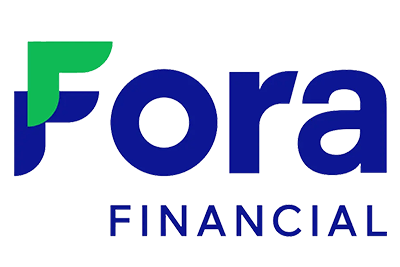Dreaming of opening a coffee shop? Great! But before you pick out your coffee beans, you need something more important: a solid business plan for a coffee shop that keeps you on track, helps secure funding, and prevents expensive mistakes. Luckily, our experts weighed in to provide this comprehensive guide about planning out and learning how to start a coffee shop. We’ll walk you through the key steps to creating a strong business plan, marketing analysis, legal considerations, and more, so you can turn your dream café into reality. Let’s get started!
The 7 Key Elements of a Coffee Shop Business Plan
A well-structured business plan for a coffee shop covers all the essential aspects of launching and running a successful café. From defining your vision to outlining financial projections.
Here are the key components your coffee shop business plan should include:
-
Executive Summary – A snapshot of your vision, mission, concept, and goals
-
Market Analysis – industry trends, competitor research, and customer demographics.
-
Menu & Pricing – What you’ll serve and how you’ll profit
-
Financial Plan – Startup costs, funding, and revenue projections
-
Operations Plan – Daily workflows, suppliers, and staffing
-
Marketing Strategy – How you’ll attract and retain customers
-
Legal & Licensing Requirements - Permits and regulations to operate legally
Let’s break down each element to help you craft a business plan that sets your coffee shop up for success!
1. Executive Summary: The Foundation of Your Coffee Shop Business Plan
The executive summary is a 1 to 2-page overview of your business and the first thing investors or lenders will read. In many cases, it’s the only section they’ll look at before deciding whether to invest.
In other words, this is your first chance to grab their attention and prove that your café is worth their time and money, and while it appears at the beginning of your business plan, it’s usually written last, summarizing key details like:
-
Your coffee shop concept: What makes your café unique? Will it specialize in organic coffee, artisan pastries, or a cozy co-working space?
-
Mission and vision: What’s the purpose behind your coffee shop, and where do you see it in the future?
-
Target Market: Who are your ideal customers? Are you catering to busy professionals, students, remote workers, or coffee enthusiasts?
-
Business Model: How will your coffee shop generate revenue? Will you focus on dine-in service, takeout, subscriptions, or wholesale partnerships?
-
Financial Snapshot: A brief overview of your startup costs, expected revenue, and any funding needs.
-
The Ask (If Seeking Funding): How much funding do you need, and what will it be used for?
Make sure to present your executive summary in a clear, compelling, and concise manner. If it grabs interest, investors and lenders will be more likely to read the rest of your business plan and seriously consider your proposal.
2. Market Analysis: What Makes Your Cafe Successful
A strong business plan for a coffee shop needs solid market research. This section proves that you understand the industry, your competitors, and ideal customers.
This is also where you demonstrate to investors and lenders that there’s demand for your offering and that you have a strategy to stand out. A market analysis should include:
Industry Overview
Start by outlining the current state of the coffee industry. Is the specialty coffee market growing? Are consumers prioritizing sustainability or convenience? Use data and trends to show that opening a coffee shop is a smart investment.
Target Market
Identifying your audience is essential for your strategy. Consider demographics such as age, income, lifestyle, spending patterns, and coffee consumption habits. Are you catering to busy professionals, students, or remote workers who need a comfortable space with reliable Wi-Fi?.
Competitive Analysis
Before opening a café, it’s crucial to conduct a competitive analysis because it helps you see where your coffee shop fits in. Identify local competitors, from small cafés to big chains, and analyze their pricing, experience, and branding. What sets you apart? Defining your competitive edge is essential.
A well-researched analysis reassures investors that your business plan is backed by data and that you have a clear understanding of what makes a cafe successful in your area, which strengthens your competitive edge and increases your chances of long-term success.
3. Menu & Pricing: Crafting a Profitable Coffee Shop Menu
The menu is the heart of your coffee shop and a key factor in attracting and retaining customers. A well-designed menu should reflect your brand and be priced strategically to ensure profitability.
Designing a Menu That Stands Out
Your coffee shop’s menu should align with your concept and cater to your target audience’s preferences. Consider offering specialty options like alternative milk or local pastries to stand out, but keep it simple at first. Too many choices can overwhelm customers and slow down service.
Pricing Strategy for Profitability
Setting the right prices is crucial for maintaining healthy profit margins. When pricing your menu, consider what your target customers are willing to pay while also factoring in ingredient costs, labor, overhead, and market demand. And don’t forget to research competitor pricing in your area to stay competitive without undervaluing your offerings.
Remember, your pricing strategy does more than just cover costs—it shapes customer behavior, encourages higher spending, enhances perceived value, and ensures your coffee shop remains both competitive and sustainable.
4. Financial Planning: How Much Does It Cost to Start a Coffee Shop?
A solid financial plan proves your coffee shop’s viability to investors and lenders. In the pursuit to answer the question, “How much does it cost to start a coffee shop?” we invite you to consider these key financial details:
Startup Costs and Expenses
Launching a coffee shop requires a significant upfront investment. Key expenses include leasing a space, renovations, equipment, licenses, inventory, and initial marketing. Ongoing costs like rent, utilities, payroll cost, and ingredient sourcing should also be factored in to avoid cash flow issues.
Revenue Projections and Break-Even Analysis
Estimating revenue is essential for understanding how long it will take to become profitable. Consider average transaction value, daily foot traffic, and seasonal trends. A break-even analysis will help determine when your sales will cover expenses, giving investors confidence in your financial planning.
Funding Your Coffee Shop
If you need external funding, clearly outline in your financing strategy how much you require, how you'll use it, and your plan for repaying loans or providing returns to investors.
Will you apply for a small business loan, seek investors, or use personal savings? Many small business lenders offer financing options tailored to new entrepreneurs, so researching the best options can help secure the capital you need.
5. Operations Plan: Running a Smooth and Efficient Coffee Shop
A well-structured operations plan ensures your coffee shop runs efficiently and delivers a great customer experience. This section of your business plan covers daily workflows, supplier relationships, and staffing needs to keep everything running smoothly.
Daily Operations and Workflow
Outline how your coffee shop will function day-to-day. From opening procedures to customer service and closing duties, having a clear workflow minimizes bottlenecks and maximizes efficiency. Consider how orders will be taken, prepared, and served to create a seamless experience for both staff and customers.
Suppliers and Inventory Management
Reliable suppliers are essential for maintaining quality and consistency. Provide details on where you’ll source coffee beans, dairy alternatives, baked goods, and other essentials. Effective inventory management prevents waste and ensures you always have what you need without overspending.
Staffing and Training
Hiring the right team is crucial for smooth operations. Define the roles needed—baristas, cashiers, kitchen staff—and your training approach to maintain service quality. A well-trained team enhances customer satisfaction and keeps your coffee shop running efficiently.
A strong business plan for a coffee shop helps you stay organized, reduce costs, and deliver a high-quality experience that keeps customers coming back.
6. Marketing & Growth Strategy for Your Coffee Shop
Even the best coffee shop won’t succeed without a strong marketing strategy to attract customers, keep them coming back, and encourage word-of-mouth promotion. This section of your business plan should outline how you plan to build a loyal customer base.
Branding and Positioning
Your brand is the reputation and experience you create. Whether it’s high-quality coffee, sustainable practices, or a strong sense of community, you need a clear identity that sets you apart and helps attract the right customers.
Online and Offline Marketing
A mix of digital and traditional marketing always works best. Leverage social media, local SEO, and a professional website to attract customers online. Offline, consider flyers, collaborations with nearby businesses, and local events to build community engagement.
Loyalty and Customer Retention
Loyal customers keep a coffee shop thriving. Besides a welcoming atmosphere, great service, and community engagement, create incentives like loyalty programs, special promotions, and personalized touches to keep them coming back.
7. Legal & Licensing: Opening a Cafe and Staying Compliant
Before serving your first cup of coffee, you need to ensure your business is legally compliant. This section of your business plan outlines the necessary permits, licenses, and regulations to operate smoothly and avoid legal issues.
Business Registration and Permits
Register your coffee shop as a legal entity and obtain the required business licenses. Depending on your location, you may need health permits, food service licenses, and a sales tax permit.
Health and Safety Compliance
Food and beverage businesses must meet strict health and safety regulations. This includes sanitation standards, employee training on food handling, and regular inspections to ensure compliance.
Employment and Tax Obligations
If you’re hiring employees, you’ll need an EIN, workers’ compensation insurance, and to follow local labor laws. Make sure you understand your tax obligations, including sales and payroll taxes, to avoid surprises.
This step is key, as it protects your business from fines, shutdowns, and other costly mistakes.
Taking the First Step Toward Your Dream Café!
A business plan is not just a document. It is the foundation of everything you are about to build. It takes real research, strategic thinking, and honesty - because tweaking numbers or skipping the hard questions will only set you up for failure.
Your plan should challenge you. It should make you question your assumptions, refine your concept, and face the realities of competition, costs, and customer demand. This is where you figure out if your vision can survive in the real world.
Now it is time to act. Secure your location, refine your menu, build strong supplier ties, and craft a brand that stands out. The coffee business is tough, but with a solid plan and sharp execution, you can thrive!



